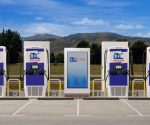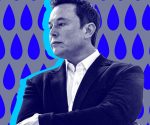Google’s new ‘for context’ links could give you the big picture around big news stories
[ad_1]
If you’ve recently spotted a little secondary box underneath a Google News story that gives you a big-picture understanding of the news, you’re not alone: Google confirms it’s launching a new “for context” feature in Google News, one which that links to a second, broader story on the same topic.
Spotted earlier by Valentin Pletzer on Twitter, the feature appears to be live on mobile phones for some very specific search results:
It’s small enough that you might easily miss what’s changed, but it’s that “for context” box under the CNET story. Intriguingly, it links to another CNET story to provide the bigger picture; it’s possible that this feature isn’t designed to divert traffic from some publishers to others, but rather just to provide the bigger picture around a news story. That’s also how Facebook’s “About This Content” feature often works, which also frequently points to related content from the same website. Of course, Google also has “knowledge panels” and “featured snippets” outside of its news box to direct people to more info about all sorts of topics.
While multiple Verge editors have gotten the new Google feature to work in multiple time zones, we weren’t able to make it pop up for other potentially controversial news topics like hydroxychloroquine. This CNET example is actually the only one we’ve seen thus far, but Google confirms that this feature isn’t just an experiment; it’s definitely going to be rolling out. “Where we detect that a publisher has this kind of background content for a timely news story, we will add it,” a spokesperson tells The Verge.
Since the start of the COVID-19 pandemic, big tech platforms have accelerated their efforts to warn readers about misinformation, with explicit warning labels, “authoritative context” around conspiracy theories, and even a warning to readers that they might not want to share older, out-of-date articles.
Update July 29th, 1:25 PM ET: Added Google’s confirmation that this is a real feature, not an experiment.
[ad_2]
Source link










